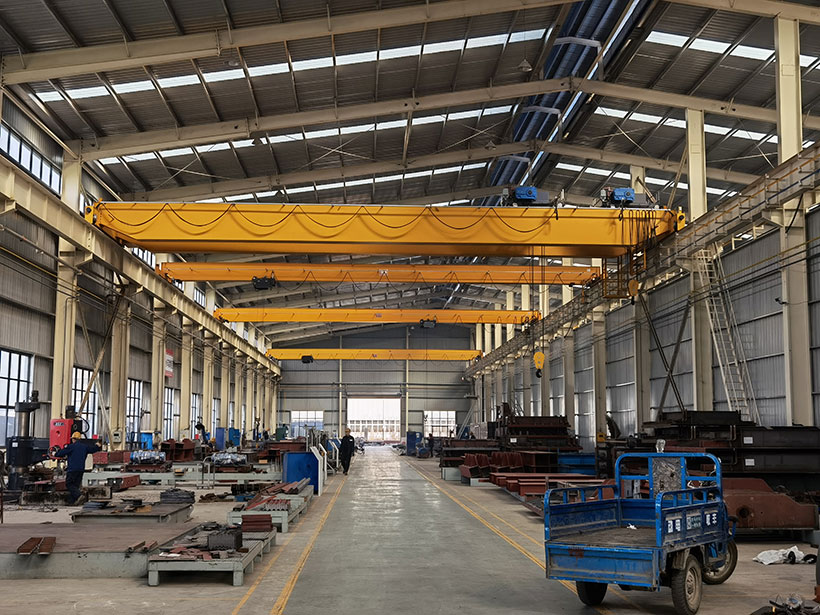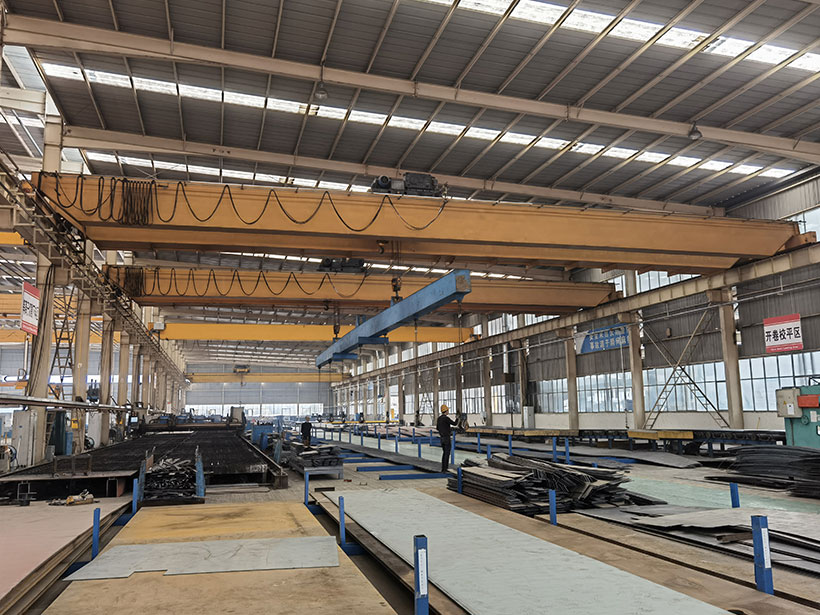Investing in a 50-ton bridge crane is a significant decision for businesses involved in material handling, manufacturing, or construction industries. The return on investment (ROI) for such a purchase involves a combination of factors, including productivity gains, reduced labor costs, enhanced safety, and improved efficiency in your operations. In this article, we will explore the key elements of ROI analysis when considering the purchase of a 50 ton bridge crane and why this investment can bring substantial long-term benefits to your business.

Understanding the Benefits of a 50-Ton Bridge Crane
A 50-ton bridge crane, often referred to as an overhead crane, is a powerful lifting solution used in heavy-duty applications such as lifting large equipment, machinery, heavy components, and bulk materials. These cranes are essential in industries like manufacturing, steel mills, shipyards, warehouses, and construction sites.
The primary benefits of investing in a 50-ton bridge crane include:
- Increased Lifting Capacity
With the ability to lift up to 50 tons, the crane can handle larger and heavier loads than manual labor or other lifting equipment. This increases your facility’s overall capacity to manage large projects or handle oversized materials that are otherwise difficult or dangerous to lift. - Improved Safety
A bridge crane minimizes the risk of injuries associated with manual lifting or the use of less specialized equipment. By automating the lifting process, the crane reduces the chance of accidents due to human error and provides operators with a more controlled and secure environment. - Enhanced Productivity and Efficiency
A 50-ton bridge crane can lift and transport heavy loads quickly, reducing the time required for material handling tasks. This leads to smoother workflows and shorter cycle times, enabling your business to meet tight deadlines and increase output without compromising quality. - Long-Term Durability and Reliability
A high-quality bridge crane is built to last for many years with minimal maintenance, ensuring you get continuous service without significant downtime. This reliability is crucial for industries that rely on steady material handling for daily operations. - Cost Savings Over Time
Although the upfront cost of purchasing a 50-ton bridge crane can be substantial, the long-term cost savings from reduced labor, fewer accidents, and increased efficiency can significantly offset this initial expenditure.

Key Factors for ROI Analysis
When considering the purchase of a 50-ton bridge crane, it’s important to evaluate several key factors that directly impact ROI. Here’s how you can break down the investment to assess its value:
1. Initial Investment Cost
The first step in any ROI analysis is to determine the total initial investment, which includes the initial bridge crane price, installation costs, and any necessary customization or accessories. Depending on the type of crane, brand, and additional features, the cost of a 50-ton bridge crane typically ranges from tens of thousands to several hundred thousand dollars.
It’s also crucial to account for any associated costs such as training for operators, maintenance tools, and spare parts. These upfront costs must be carefully considered against the long-term benefits of the crane.
2. Labor Cost Savings
One of the most significant ways a 50-ton bridge crane improves ROI is through labor savings. Traditional methods of lifting heavy loads, such as using manual labor or smaller equipment, are both time-consuming and inefficient. Workers must exert considerable effort, and the risk of injury increases.
By automating material handling with a bridge crane, you reduce the need for as many laborers, freeing them up to focus on other tasks. Additionally, fewer workers are needed to handle heavy lifting, reducing the likelihood of workplace injuries. These factors contribute to reduced labor costs and improved overall workforce productivity.
3. Increased Operational Efficiency
In addition to labor savings, an overhead bridge crane for sale can increase your operational efficiency by speeding up material handling tasks. The crane can lift, move, and place materials quickly and accurately, reducing downtime between tasks. This efficiency is particularly important in industries like construction, manufacturing, or warehousing, where time is money.
A 50-ton bridge crane allows for simultaneous operations, meaning that while one load is being lifted, another can be moved into position, increasing the number of jobs completed in a given timeframe. With faster turnover and reduced handling time, the crane helps businesses meet production targets and deadlines more effectively.
4. Reduction in Downtime and Maintenance Costs
A well-maintained 50-ton bridge crane has a long service life and requires relatively little maintenance compared to other types of equipment. Moreover, when your business experiences less downtime, it leads to more consistent production and fewer disruptions in operations.
The costs of maintenance and repairs are generally lower for modern cranes due to their durability and availability of spare parts. Additionally, many cranes are equipped with advanced monitoring systems that alert you to potential issues before they result in costly breakdowns, further reducing maintenance expenses.
5. Enhanced Safety and Compliance
Investing in a 50-ton bridge crane can also enhance workplace safety, which is a crucial factor in ROI analysis. Heavy lifting poses significant safety risks, and accidents can be costly in terms of medical expenses, legal liabilities, and lost workdays. By automating material handling with a crane, you can mitigate these risks, ensuring the safety of your workers.
Additionally, many industries are subject to strict safety regulations. A crane that meets all regulatory standards ensures that your business remains compliant, avoiding potential fines or penalties. A safer working environment also improves employee morale, which can contribute to better overall productivity.
6. Long-Term Profitability
The ROI from a 50-ton bridge crane is not only measured in immediate savings but also in the long-term profitability it generates. As your business grows and handles larger projects or more materials, the crane will continue to provide the capacity needed for these increased demands. Over time, the crane will pay for itself through the enhanced efficiency and cost savings it provides.
Moreover, with advancements in technology, modern bridge cranes come with smart features like remote monitoring and control, which further streamline operations and reduce the need for operator intervention. These features improve the overall profitability of the crane by optimizing its performance.
7. Intangible Benefits
While some benefits may be more difficult to quantify, there are also intangible returns on investment when purchasing a 50-ton bridge crane. For example, customer satisfaction can increase when production timelines are met more efficiently, and your ability to handle more and larger projects can open up new business opportunities. These long-term advantages contribute to the overall growth of your business.
Calculating the ROI
To calculate the ROI of a 50-ton bridge crane, you can use a simple formula:
ROI= Net Profit from Crane/Cost of the Crane×100
Where:
- Net Profit from Crane is the total savings and increased profits generated from the crane, including labor savings, reduced downtime, and increased efficiency.
- Cost of the Crane includes the initial EOT crane price, installation costs, and any additional expenses.
Typically, you can expect a positive ROI within a few years of operation, depending on the scope of your business, crane usage, and the factors mentioned above.
Conclusion
Investing in a 50-ton bridge crane offers a compelling case for businesses looking to enhance their lifting capacity, improve operational efficiency, reduce labor costs, and increase safety. While the upfront cost may seem substantial, the long-term benefits make it a wise investment. By conducting a thorough ROI analysis that includes factors such as labor savings, increased efficiency, maintenance costs, and long-term profitability, you can make an informed decision that helps your business grow and succeed in a competitive market.
